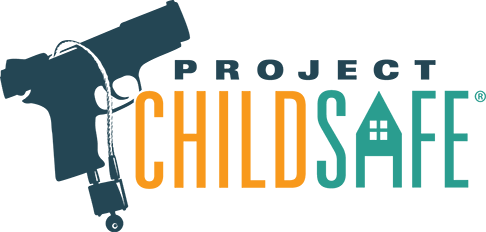Search
Cart
There are no items in your cart.
Login
Don’t PULL the Trigger!
On Accuracy - some advice for new handgun shooters
Who hasn’t experienced the frustration of seeing your shots miss the target and hitting way off? In an effort to improve your shooting, you start educating yourself and watch countless videos about grip, stance, trigger management, and aiming. All these aspects are important and intertwined. I do, however, believe that new handgun shooters will save themselves a lot of time and frustration if the aspects are put in the order of relative importance. I will even subjectively assign relative percentages of importance, assuming 100% is the whole of all contributing influencers:
- Trigger Management: 30%
- Mindset: 30%
- Grip: 20%
- Aiming: 10%
- Stance: 10%
A probable question that bears asking is, why is aiming being assigned such an insignificant weight? Think of it this way: this is not because aiming is insignificant; it’s because trigger management and mindset are more significant. A quick, rough aim with a good trigger press and no flinching will most likely yield better results than a meticulous aim followed by jerking the trigger and/or flinching.
Speaking of flinching, it is an involuntary reflex in anticipation of recoil. In context of accuracy, it’s a huge factor that arguably deserves its own category. Here, I am choosing to place it under the “Mindset” category, since flinching is a reflex that one can learn to control by the power of the mind, until it’s successfully inoculated and doesn’t need to be actively suppressed anymore (only extensive practice will get you there!). But the reason it’s a huge factor is because no matter how good your aim is, if you flinch while pressing the trigger, your accuracy is out of the window. Finally, it’s worth mentioning that flinching can be hidden: you might think that you don’t flinch when in fact you do. You should go to the range and perform the commonly known exercise of mixing live rounds with dummies within the same magazine (or cylinder). The purpose of it is to see if you flinch when you’re expecting the gun to fire but it doesn’t. For the integrity of the exercise, don’t load the magazine yourself - have somebody do it for you, so you wouldn’t know when a dummy round will come. If you hit a dummy round and the muzzle of your gun hasn’t moved (this should also be confirmed by an outside observer), your being proud of yourself is well justified.
Trigger Management: We already touched on jerking the trigger and its detriment to accuracy. Furthermore, despite the popular phrase, “pull the trigger,” triggers should not be pulled - pulling implies unevenness, and as a result, dislocation of the aim and change to the bullet trajectory. Handguns are very unforgiving; even a slight dislocation will have a significant impact on where the shot is going to hit. Rather than pulled, the trigger should be smoothly and consistently pressed straight back. “Smoothly” doesn’t necessarily mean “slowly,” although good trigger techniques and habits should be developed at slow speeds, which could then be gradually increased, to the extent of not jeopardizing the quality of the trigger press. When it comes to the optimal positioning of the finger on the trigger, I believe it needs to be arrived at individually, in light of a specific person’s hand structure as well as finger length and strength. Generally speaking, however, it shouldn't be too far or too close, since either one would impact your accuracy.
Mindset: There are two aspects in regards to the mindset. The first one is about eradicating flinching. You have to give yourself an explicit direction to not flinch and do your best to enforce it through a conscious and continuous self-supervision. This is similar to mastering driving: at first, there will be many things that you have to consciously watch and be sure to perform, but with time, most of these things are done automatically; you are still doing them but at the subconscious level. Making yourself not flich is very similar. Just like becoming a good driver, it’s achieved through lots and lots of practice. By the way, please don’t resort to a simulator kind of practice, unless you think one could become a good driver by driving a car through a software application. That is nonsense, and I am going to leave it at that. The second aspect of the mindset is the overall confidence and a positive, success-oriented attitude. This is of great importance no matter what you do, and shooting is no exception.
Grip: you’ll find a lot of resources online discussing proper grip and various related techniques. I am not going to offer anything new here, except a few arguable recommendations:
- The grip should be firm enough for you to be in full control of the gun. Conversely speaking, the grip should never be loose. At the same time, it should not be too hard, unless you are hoping to squeeze lemon juice out of the gun handle. Both loose and overly tight grip is likely to detrimentally impact your accuracy.
- The grip should not interfere with the functioning of the trigger finger. You need to be able to perform a smooth, long trigger press while maintaining a firm grip of the gun and not moving the point.
- Invest into strengthening your grip. The objective is to be able to achieve and maintain a firm grip without rigorous squeezing. There are some simple grip strengtheners that you could buy and exercise with.
Aiming: I am not going to get into this subject as there are some excellent resources out there. Here are two of them: 1, 2. As almost any area of mastering, aiming entails a lot of room for a deep-dive. However, for practical self-defense purposes, aiming is fairly easy and certainly takes less time and effort than developing proper trigger discipline.
Stance: similarly, I don’t have much to add to the wealth of quality resources out there. HERE, for example, is one of them. However, I encourage you to not to attribute too much significance to stance in relation to other, more impactful aspects. Stance is all about two things: stability and effectiveness. You have to try different stances, perhaps develop your own custom variant of one, and arrive at something that works best for you.
Thank you for reading! Be safe and responsible!
_______________________________
Author: Edward Meyman
CEO, Kind Sniper LLC
.
Suggested Additional Materials
NEWSLETTER










Leave a Comment